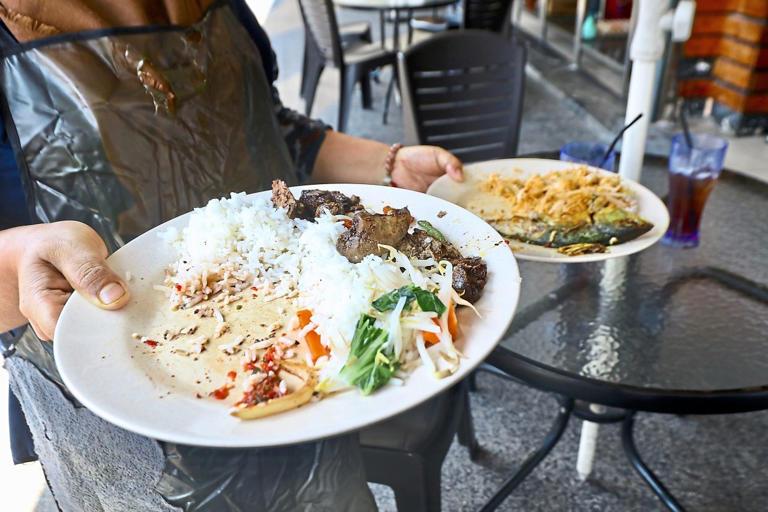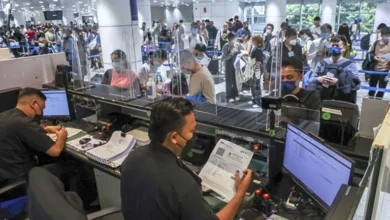Malaysians continue to waste rice despite price rise, say eatery owners
Malaysians continue to waste rice despite price rise, say eatery owners

PETALING JAYA: Imported rice is getting more expensive and parts of the world are facing grain shortages – but wasting food seems to be an entrenched habit for many Malaysians.
“Malaysians are so ‘generous’ in wasting food,” said Malaysian Indian Restaurant Owners Association vice-president C. Krishnan.
“There is often leftover rice in the plate, whether it’s half or a small portion,” he said.
His workers, he said, would always find uneaten rice when they cleared tables.
Krishnan said restaurants had made concerted efforts to curb rice wastage and mitigate the impact of rising prices.
“Unfortunately, sometimes customers order food but do not eat it,” he added.
He said eateries might explore the possibility of introducing dining options such as smaller bowls.
“This would cater to those with smaller appetites, enabling them to enjoy a smaller portion at a lower or similar price point, while customers who desire larger servings can pay extra,” he said when contacted.
Krishnan said he believed the government should do more to educate the public on consuming appropriate portions and not wasting food.
With prices of imported rice having gone through several revisions of late, he said business owners were taking a “wait and see” approach.
“Rice used to be very cheap, ranging from 50sen to RM1. Now it costs between RM2 and RM3 per serving,” he added.
Krishnan said that restaurants typically need to cook 50kg of rice daily.
“There’s no need to cook the entire quantity in the morning, so the issue of wasting rice by storing it for the next day doesn’t arise,” he added.
Sahabat Tomyam Prihatin Semalaysia Association adviser Che Mamat Chemod also said Malaysians waste food, but restaurant owners were not in a position to restrict the amount customers want.
“We want them to order more food because that’s how we make money. But seeing them not finishing their meals is disheartening,” he said, adding that restaurant owners were conflicted over this.
“With the rising cost of ingredients, we hope people will value food even more,” he added.
Che Mamat said restaurants would prepare food based on the orders placed by customers to prevent wastage.
“We’ll continue to cook the same quantity of rice daily, which can be used for fried rice later. We can also refrigerate the rice for meals for the staff. We don’t want to waste rice,” he said.
Malaysia Selangor and Federal Territory Ku Su Shin Chung Hung Restaurants Association deputy president Justin Hor Chee Keong said in recent years, he noticed many people had been reducing their food intake and the consumption of white rice in Chinese restaurants had decreased.
“Some customers even skip white rice altogether… for health reasons,” he added.
White rice in restaurants is served in small bowls, Hor said, adding that this typically costs between RM2.50 and RM3.
“If customers need more white rice, they can order an additional bowl,” he said.
Pan Malaysia Koo Soo Restaurants and Chefs Association president Wong Teu Hoon cited a Chinese saying, “Who knows the toil involved in every grain of rice in the bowl?”
This, he said, was about the traditional value of not wasting food.
He said that in many households, the elders would encourage children to eat all the rice in their bowl.
To curb wastage, he said, some restaurant owners served rice according to the number of customers.
“More rice is added only if it’s not enough.
“In the kitchen, they cook the second batch of rice only if supply is running low. It takes about 20 minutes to cook rice, so they don’t prepare too much rice to avoid wastage,” said Wong.
In April, Deputy Local Government Development Minister Akmal Nasrullah Mohd Nasir said 252,521 tonnes of solid waste were collected by Public Cleansing Management Corporation during Ramadan last year.
Out of that, about 44.5% was food waste.
The price of imported white rice went up by 36% to RM3,200 per metric tonne as announced by Padiberas Nasional Bhd (Bernas) on Sept 1.
On July 20, India stopped its non-basmati white rice exports to stabilise prices and ensure availability within the country.
The move was driven by domestic concerns such as rising food prices, inflation, and fear of a rice shortage due to El Nino disruptions.
Malaysians continue to waste rice despite price rise, say eatery owners
DISYORKAN UNTUK ANDA :
- Punca Hujah Kritikan DNAA Kes Zahid Oleh Musuh Politik Beliau
- Berapa ramai ‘Pemimpin’ dilahirkan zaman KJ?
- Memo IPIC bocor, laporan polis dilakukan rakyat marhein
LAWATI LAMAN FACEBOOK KAMI :




